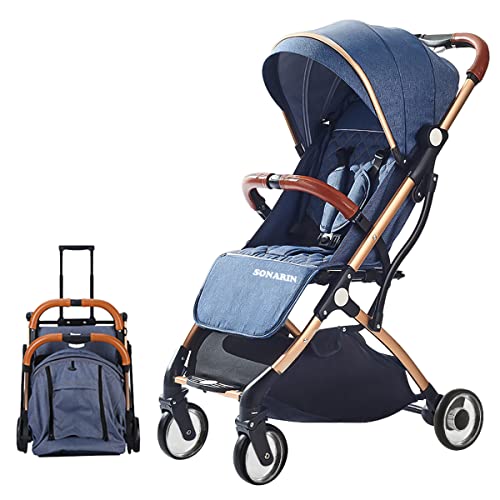What is a Pushchair Single?
A pushchair single is designed to carry a single child (although some can be used from birth with a car seat or carrycot). Some are lightweight and some can be converted into double.
It has a modern, sleek design and features that make it a favourite with families, like adjustable handlebars for height and a large basket. It also comes with machine-washable fabrics as well as a footmuff, an essential item for the colder months.
Convertible
Convertible strollers are a fantastic alternative for parents looking for a stroller that will grow with their child. This kind of stroller comes with a hammock seat which can be transformed into an infant carrycot. It's a great choice for babies. It's also easy to fold from the handlebar and lightweight to drive.
The Larktale Crossover is a stroller/wagon that easily converts into a double-seater without the need for any tools. It's a great choice for parents due to its numerous features, including an extensive undercarriage in both modes, and an organizer that hangs from the push bar. There are a few disadvantages, such as the confusing zipper that connects the back of the seat in wagon mode and the size of the cup holders.
Brakes
A good single pushchair should include two braking systems. One of them is the hand brake which is typically an incredibly small lever located on the rear of the chassis which you turn to stop, then push it back up to get going again. This is really handy on urban terrain where you need to slow down quickly or on the pavements of shopping centres where you may need to wait for pedestrians. The other type of braking system is the front wheel brake system found on higher end pushchairs like the phil&teds dash and the Bugaboo Cameleon 3 which is activated by pushing the pedal in the same manner as a bicycle brake. single buggy is especially helpful when you're on rough terrain or while running, as it stops the pushchair right away and ensures your child's safety.
The left coupling 171 that connects the rear legs 57 and 19 includes a rod to mount the rear leg 173 to which rear leg 57 can be fixedly to a gear that is placed on the side surface 163 within hub 3 of housing 33; a securing bushing 177 to the gear 175 that extends through a slot at the end of the mounting bar 173 and a wire that is arranged to wrap around a J-shaped spool 181 and post 31 of the front leg 19. The left coupling system 171 that is used for the rear leg 57 as well as the front leg 19 include a rear leg mounting bar 173 to which the rear 57 is fixedly joined and a gear 175 that is mounted on a side surface 163 of the housing 33, which is positioned within hub 3; the spool component 181 and post 31 of the front leg 19 coiled around the J-shaped spool component 181 within a slot 179 located at the end of the mounting bar 173; and a coiled cable 183.

The brake system 215 has the first end 227 which is designed to be in contact with the braking cam when the braking cam is in the second position, and an additional end 229. The second end of the lever for braking has a variety of teeth 231. The teeth are configured to engage the teeth 232 of a gear 233 driven by a first rear wheel 59 on stroller 1. When the brake lever is pulled the braking cylinder blocks the rotation of the first rearwheel 59 of stroller 1. The brake system is operated manually.
Seat unit/carrycot
A pushchair single is an infant travel unit that is designed for infants older than six months who are just beginning to sit up. They often have the option of converting into a pram. Prams usually have more advanced features and are designed for newborns through to toddlers, and have extra padding to ensure your child is comfortable.
Many pushchairs can be used with car seats to create a travel system bundle, ideal for taking sleepy babies from the car to the pushchair without disturbing them. Some also feature the option of a carrycot that is perfect for infants, and some include a seat that is able to be used when your baby is ready to move from the carrycot.
Most pushchairs that are 'from birth' allow you to select the 'facing direction' of the seat unit/carrycot. You can choose to face your parent to bond with your baby, or face the world so that they can explore the world. Some even have the option to connect a second carrycot, infant carrier or ride-on board to accommodate growing families.
A good pushchair should be in a position to easily move across a variety of terrains including grass, pavements and rough surfaces. A sturdy frame that's designed to last is crucial, as is the choice of tyres. Some tyres are pneumatic which require air to be added at intervals and some tyres are made of an alternative material such as EVA or PU that can give a more comfortable and stable ride.
Your pushchair is likely to be one of the most used baby products you own so it's worthwhile to invest in a quality design that is easy to clean and maintain. A quick wipe-down with a baby wipe will eliminate any spills or crumbs and more stubborn marks can be removed by aiming the hot air from your hair dryer at the area for a minute.
